Catenary Pottery Printer using analogue parametric design by GT2P
Chilean studio Great Things to People (GT2P) has built a machine to generate pottery objects using an analogue version of parametric design.
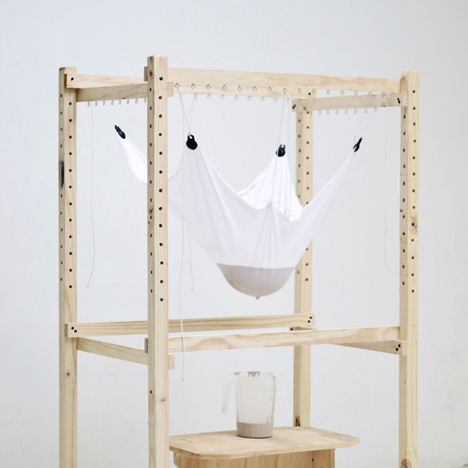
The Catenary Pottery Printer by GT2P comprises a wooden frame from which sheets of gauze, muslin or lycra can be suspended and used to slip-cast ceramics.
Liquid clay, or slip, is poured into the fabric and allowed to drip through, leaving a thin layer behind that hardens into a small dish.
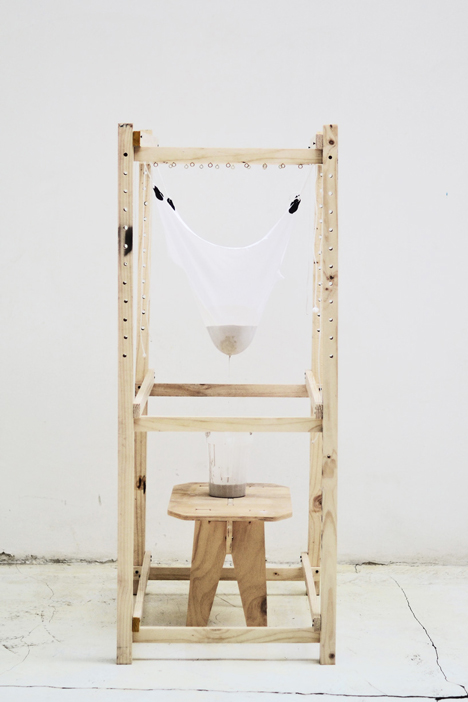
Where digital parametric design would generate forms depending on the behaviour of a computer algorithm in response to a set of data, their system generates forms depending on the behaviour of the textile in response to a set of physical conditions.
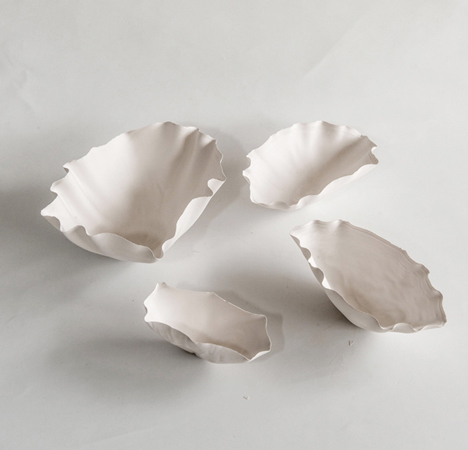
As with digital parametric design, different results can be achieved by altering the set of variables - in this case factors including the position and number of anchor points for the fabric, stretchiness of the textile selected, the weight and amount of liquid slip, or drying times and viscosity of the type of clay.
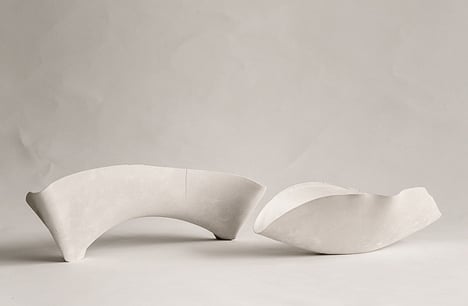
"This is part of an exploration on how to create standard machines that generate non-standard results, mixing analogue numerical control with traditional material and techniques integrated in one real-time process," said Guillermo Parada of GT2P, adding that "parametric design is not necessarily a digital computation methodology."
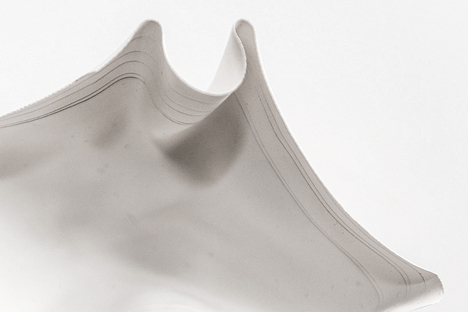
"This project gives us a new scope - more parametric, less digital - allowing us to speak about parametric design without computers and digital fabrication laboratories which generates dialogues from academic contexts to communities of artisans," he continued.
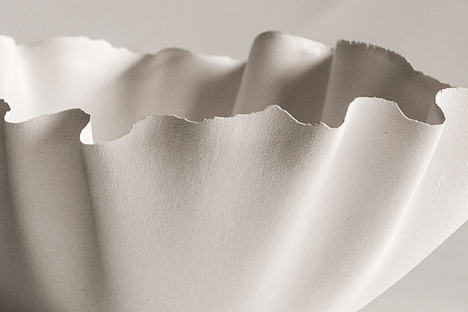
The designers have used the machine to make tableware, candle-holders and lamps, and suggest that the process could be scaled-up to make larger objects like furniture using lost-wax casting or resin.
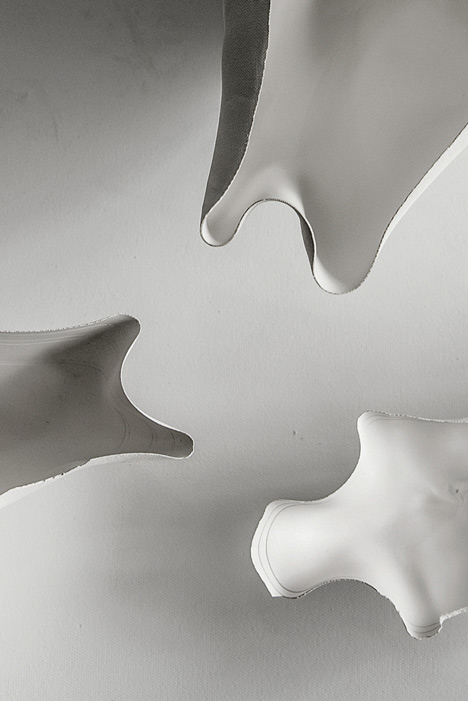
Photos are by Victor Imperiale.